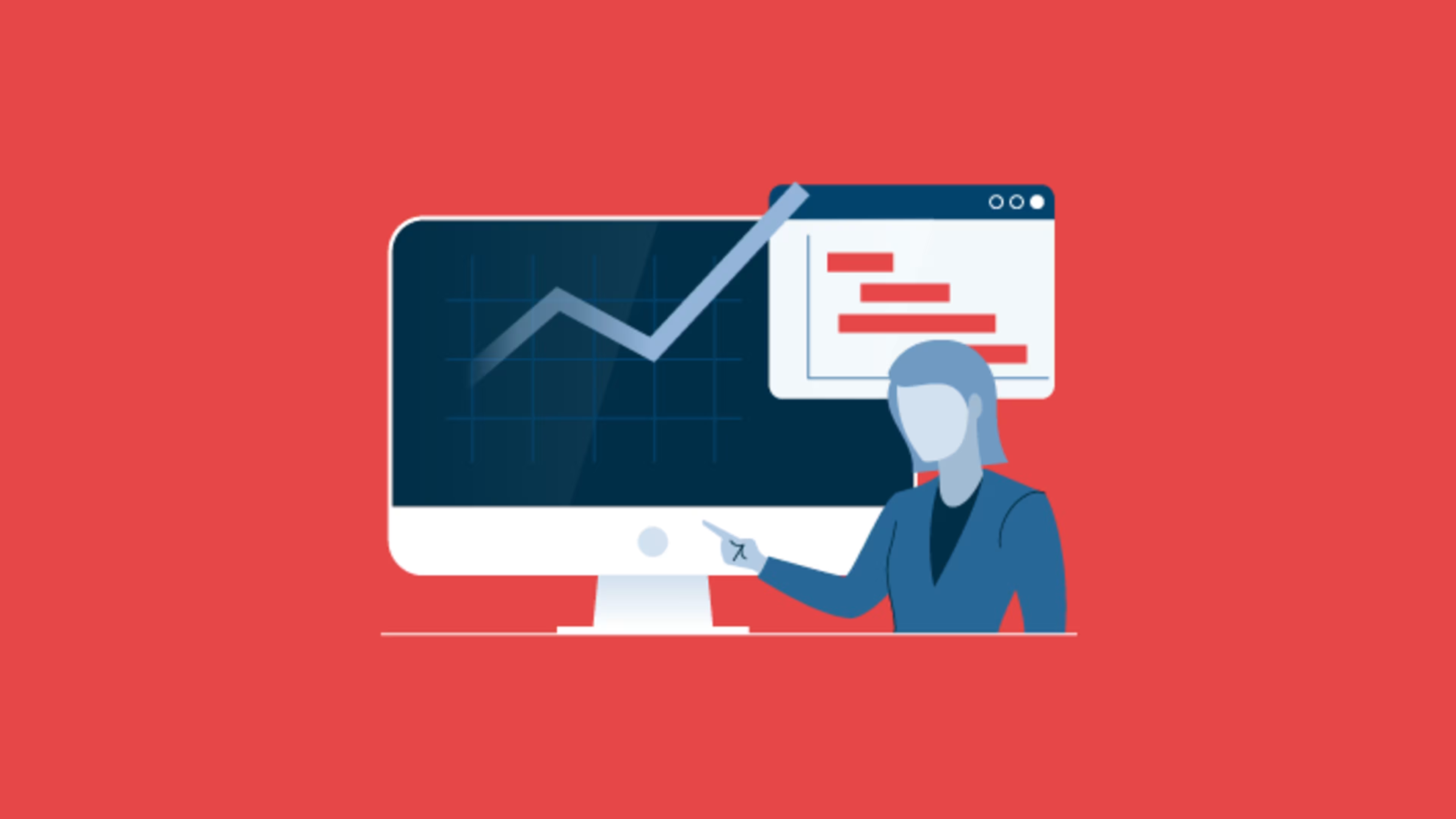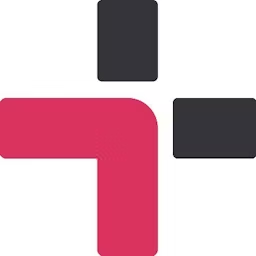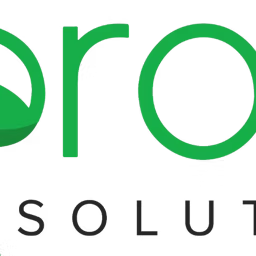Every business needs to ensure that its employees are contributing towards business goals. HRs and team managers can leverage performance management software to set clear employee goals, track progress, and provide continuous feedback to facilitate growth.
The right performance management tool can simplify HR operations by helping with goal setting and centralizing employee data. Understanding the key features of this software will help you when you are ready to invest.
To help you with your search, we’ve determined five key performance management software features based on the ratings given by verified software users. We also include the highest-rated performance management software for each feature.

1. Ongoing performance tracking
The ongoing performance tracking feature in performance management software allows team managers and leaders to continuously monitor and assess employee performance against predefined goals. It enables real-time feedback that helps identify areas for improvement and recognize achievements promptly. It also supports adaptive goal setting, allowing adjustments based on changing priorities or job roles.

What business problems does ongoing performance tracking solve?
Ongoing performance tracking helps managers and business leaders solve the following challenges:
Delayed feedback: When feedback is not immediate, it gets difficult for managers to identify employee achievements or areas of improvement. The ongoing performance tracking feature addresses this challenge by collecting performance feedback in real time or whenever necessary rather than waiting for the performance review cycles. This eliminates the gap between performance reviews, enabling timely intervention to help employees improve continuously.
Misalignment with business goals: Employees' efforts should contribute to the overarching objectives of the business. Otherwise, it can result in inefficiencies and a lack of focus. This feature empowers you to create individual goals, ensuring that employee activities are consistently aligned with the broader business objectives. It also allows you to adjust the goals with changes in strategy or market conditions.
Skill gap: The difference between skills required for the job and skills possessed by the employees can decrease productivity. Continuous performance tracking helps in pinpointing such gaps where employees may need additional training or development. It facilitates targeted skill enhancement and career growth opportunities.
How users benefit from ongoing performance tracking
Here are some excerpts from the reviewers of ongoing performance tracking features describing how it helps them:
“We wanted employees to be empowered to self-direct their performance. This gives them full transparency of ratings and the ability to enter in employee notes and goal updates.”
“This was the piece that was missing for us in our performance management. This has allowed our employees and managers to have an accurate snapshot of performance month-over-month instead of mid-year and end-of-year only. It's been a game changer.”
“You can set mid-cycle and end of year review, insert your goals and keep track of the throughout the year. You can track and visualize your past and ongoing results.”
Top 3 products with the highest ratings for ongoing performance tracking
We selected products for this article based on their average ratings between March 2022 - March 2024, which may differ from their current overall average ratings.
Trial/Free Version
- Free Trial
- Free Version
Ongoing performance tracking feature rating
Device compatibility
Trial/Free Version
- Free Trial
- Free Version
Ongoing performance tracking feature rating
Device compatibility
Trial/Free Version
- Free Trial
- Free Version
Ongoing performance tracking feature rating
Device compatibility
2. Employee database
The employee database feature in performance management software acts as a centralized repository for storing detailed employee profiles, including their personal information, job roles, performance history, and development plans. This feature enables HRs to easily access and manage employee data.

What business problems does employee database solve?
Employee database helps HRs solve the following challenges:
Scattered information: Locating and compiling employee data takes double the amount of effort if the information is scattered across several folders and databases. The employee database feature centralizes all personnel information in one accessible location, simplifying the retrieval process. This consolidation enables HR professionals to make informed decisions swiftly, enhances productivity, and reduces the likelihood of errors.
Inaccurate data: The payroll staff may have to spend a lot of time fixing errors if they don’t have access to accurate employee information. Inaccuracies in data can also lead to compliance issues and impact business integrity. An employee database mitigates these risks by providing a single source of truth for all employee information, facilitating real-time updates and accuracy checks. This ensures that data remains current and reliable, enabling precise payroll processing, adherence to legal standards, and informed decision-making.
Regulatory risks: Non-compliance with labor laws and data protection regulations can result in hefty fines and damage to reputation. The employee database ensures that all necessary employee information is accurately recorded, updated, and easily accessible for compliance purposes. It supports adherence to regulations by facilitating audits, reporting, and ensuring HR policies are in line with current legal requirements, thus protecting the business from potential legal and financial repercussions.
How users benefit from employee database
Here are some excerpts from the reviewers of the employee database feature describing how it helps them:
“There are a lot of customization options under each contact card. I particularly like the ability to add custom properties for contact info outside of the standard contact properties.”
“The database has a an easy to use search function that lets me know if another recruiter has already submitted my candidate for a particular job req. It flags the transaction immediately if so, to prevent a conflict of interest. It's also easy to update talent records, versus having to to start from scratch on every submission.”
“The comprehensive and customizable options within this database provide us with a robust platform for organizing and accessing employee information efficiently. The user-friendly interface ensures easy navigation, and the customizable fields allow us to tailor the database to our specific needs.”
Top 3 products with the highest ratings for employee database management
We selected products for this article based on their average ratings between March 2022 - March 2024, which may differ from their current overall average ratings.
Trial/Free Version
- Free Trial
- Free Version
Employee database feature rating
Device compatibility
Trial/Free Version
- Free Trial
- Free Version
Employee database feature rating
Device compatibility
Trial/Free Version
- Free Trial
- Free Version
Employee database feature rating
Device compatibility
3. Goal setting and tracking
The goal setting and tracking feature in a performance management system allows to establish clear, measurable objectives aligned with business targets. It enables employees and managers to monitor progress towards these goals in real time, fostering accountability and facilitating adjustments as needed. This feature supports transparent communication between staff and leadership, encouraging continuous improvement and focused effort.

What business problems does goal setting and tracking solve?
Goal setting and tracking help employees and managers solve the following challenges:
Misaligned objectives: Dissonance between business and employee goals can lead to inefficiencies and diluted focus. Goal setting and tracking directly tackle this challenge by establishing clear, aligned targets for each employee that contribute to the business's broader objectives. This alignment ensures that all team members are working cohesively towards common goals, enhancing overall productivity and driving business success.
Ineffective feedback loops: Ineffective feedback loops result in missed opportunities for improvement, stagnation in employee development, and potential disengagement. Goal setting and tracking address this by establishing clear benchmarks and regular review points for assessing progress toward objectives. This systematic approach ensures timely, specific, and constructive feedback, facilitating a continuous dialogue between employees and managers.
Low employee engagement: Low engagement among employees is often a sign of reduced productivity and diminished morale which leads to higher turnover rates. Goal setting and tracking combat this by involving employees in defining their objectives, aligning their goals with the business's vision, and clarifying their role in achieving shared success. This process increases their sense of ownership and motivation, making them more committed and engaged.
How users benefit from goal setting and tracking
Here are some excerpts from the reviewers of goal setting and tracking feature describing how it helps them:
“The goal setting feature helps ensure that there are a clear set of objectives for the year agreed upon by the employee and management. This feature is user friendly and allows one to set short and/or long term goals.”
“Able to set goals for the year ahead and see review notes from your previous conversations with management. Able to track progress against goals and keep a record of work towards achieving them.”
“This is a straightforward tool where you can see the goal target and progression along the collaborator assigned to it. You can also link documents in relation with the goal setting.”
Top 3 products with the highest ratings for goal setting and tracking
We selected products for this article based on their average ratings between March 2022 - March 2024, which may differ from their current overall average ratings.
Trial/Free Version
- Free Trial
- Free Version
Goal setting and tracking feature rating
Device compatibility
Trial/Free Version
- Free Trial
- Free Version
Goal setting and tracking feature rating
Device compatibility
Trial/Free Version
- Free Trial
- Free Version
Goal setting and tracking feature rating
Device compatibility
4. HR management
The HR management feature in performance management software supports HR in recruiting, onboarding, employee development, and retention strategies. It allows for efficient handling of personnel-related tasks, ensuring that employee records are accurately maintained and easily accessible. This feature supports performance appraisal processes, facilitates skill development through training modules, and assists in succession planning. It enhances decision-making by providing comprehensive insights into the workforce.

What business problems does HR management solve?
HR management helps human resources professionals solve the following challenges:
Talent acquisition and retention difficulties: Attracting talent and keeping them is one of the main objectives for HR to ensure the business grows and stays competitive in the market. The HR management feature helps the HRs achieve their goal by simplifying the recruitment process, identifying and attracting top talent efficiently, and facilitating a positive onboarding experience. It also supports retention strategies through employee engagement, performance management, and career development tools, ensuring a satisfied and motivated workforce.
Ineffective employee development and training: It’s crucial to ensure that employees are equipped with the necessary skills and knowledge needed to perform evolving tasks. Here, the HR management feature helps in identifying any skill gaps, managing comprehensive training programs, and tracking progress toward development goals. This ensures employees continuously improve and adapt their abilities to meet evolving job requirements, thus enhancing individual performance.
Succession planning challenges: Succession planning involves the complex process of identifying and preparing future leaders to ensure business continuity. The HR management feature simplifies this process by offering tools for assessing talent across the business, identifying potential leaders, and tracking their development progress. It facilitates targeted training and mentorship programs, ensuring that high-potential employees are prepared to step into key roles, thus securing the business's future leadership and strategic direction.
How users benefit from HR management
Here are some excerpts from the reviewers of HR management feature describing how it helps them:
“We can do all the HR related tasks at one place inluding hiring, employee attendance and leave management, performance and salary records.”
“It provides an overview of all HR processes, offers relevant reports to support HR analytics, and reduces time spent on administrative tasks.”
“The system administrator can send notifications or make modifications to all employees with just one click. As a user, I can submit all of my requests with just one click and also notify all related employees via email.”
Top 3 products with the highest ratings for HR management
We selected products for this article based on their average ratings between March 2022 - March 2024, which may differ from their current overall average ratings.
Trial/Free Version
- Free Trial
- Free Version
HR management feature rating
Device compatibility
Trial/Free Version
- Free Trial
- Free Version
HR management feature rating
Device compatibility
Trial/Free Version
- Free Trial
- Free Version
HR management feature rating
Device compatibility
5. Self-assessment
The self-assessment feature in performance management software empowers employees to evaluate their own performance, reflecting on achievements and identifying areas for improvement. This process encourages self-awareness and personal accountability, allowing individuals to set personal goals and contribute to their development plans.

What business problems does self-assessment solve?
Self-assessment helps employees solve the following challenges:
Lack of employee accountability: Employees neglecting their responsibilities can lead to decreased productivity, morale, and overall team performance. The self-assessment feature tackles this challenge by encouraging employees to take ownership of their work and achievements. It prompts them to reflect on their contributions, recognize areas for improvement, and set personal goals. This process fosters a sense of responsibility, improves transparency, and enhances individual and team accountability.
Ineffective feedback channels: Ineffective feedback channels hinder employee development and engagement, as feedback is either not communicated, lacks specificity, or fails to be actionable. The self-assessment feature addresses this by enabling employees to proactively evaluate their own performance, identifying strengths and areas for improvement. This self-driven insight encourages a culture of open dialogue and continuous feedback between employees and managers, making the feedback process more effective, personalized, and aligned with individual development needs.
Unrecognized skills and achievements: Employee contributions going unnoticed can demotivate them and reduce their productivity. The self-assessment feature ensures that the employees have a platform to articulate and reflect on their accomplishments and skills. This process not only boosts their visibility within the business but also enables managers to acknowledge and leverage these talents effectively, fostering a culture of recognition and empowerment that aligns employee contributions with business success.
How users benefit from self-assessment
Here are some excerpts from the reviewers of the self-assessment feature describing how it helps them:
“The self-assessment surveys have been valuable in assessing individual performance and fostering self-reflection. It provides a user-friendly interface and insightful questionnaire, enabling employees to evaluate their own strengths, areas for growth, and contribute to their professional journeys.”
“I find it beneficial as it promotes self-reflection and personal advancement among employees. Moreover, it enables a comprehensive performance review by integrating my feedback with the employees' self-evaluations, resulting in productive discussions.”
“The process of self review is an integral part of the review process within the automated performance review process. Automated notifications to manager is a great feature.”
Top 3 products with the highest ratings for self-assessment
We selected products for this article based on their average ratings between March 2022 - March 2024, which may differ from their current overall average ratings.
Trial/Free Version
- Free Trial
- Free Version
Self-assessment feature rating
Device compatibility
Trial/Free Version
- Free Trial
- Free Version
Self-assessment feature rating
Device compatibility
Trial/Free Version
- Free Trial
- Free Version












